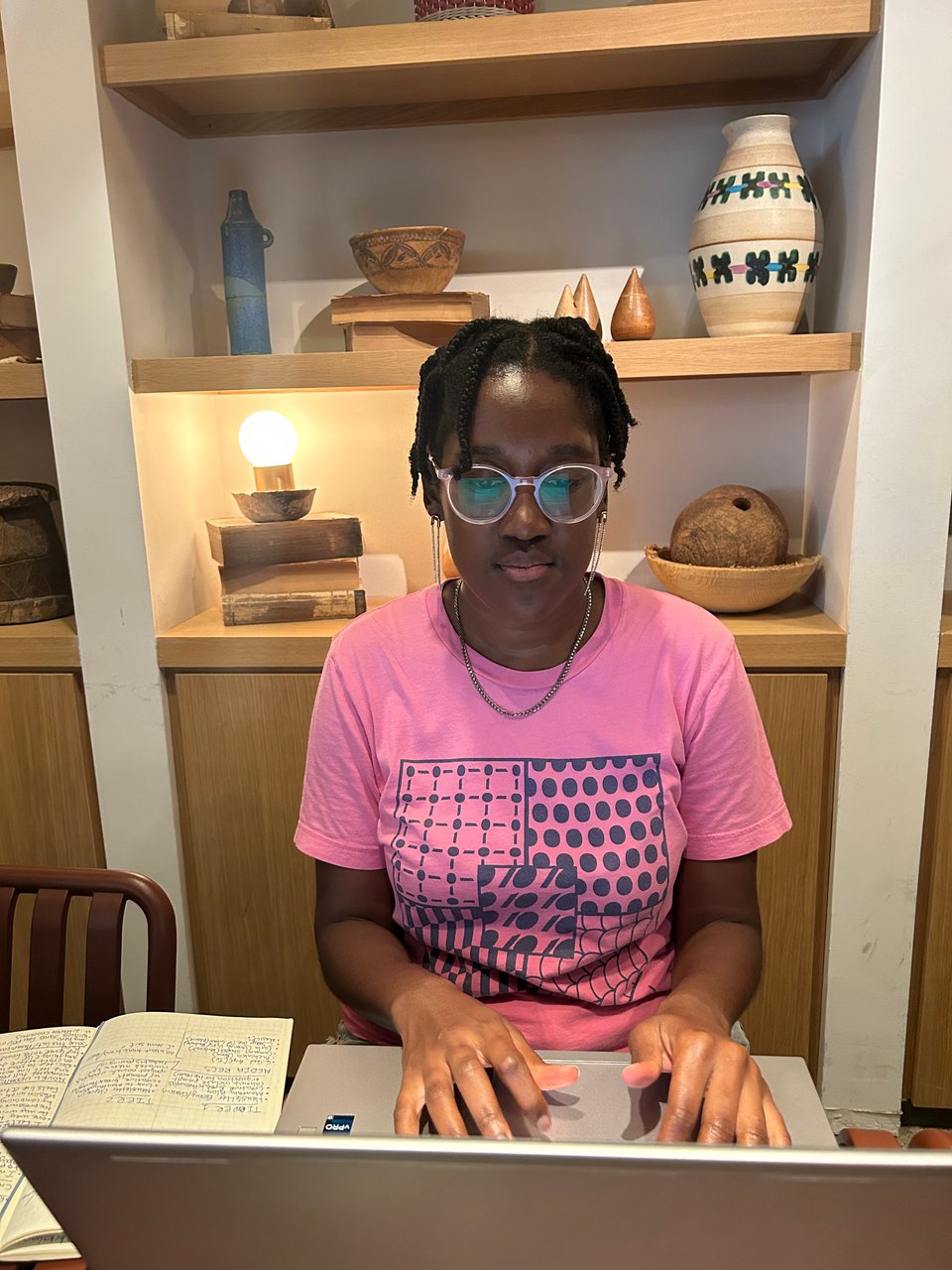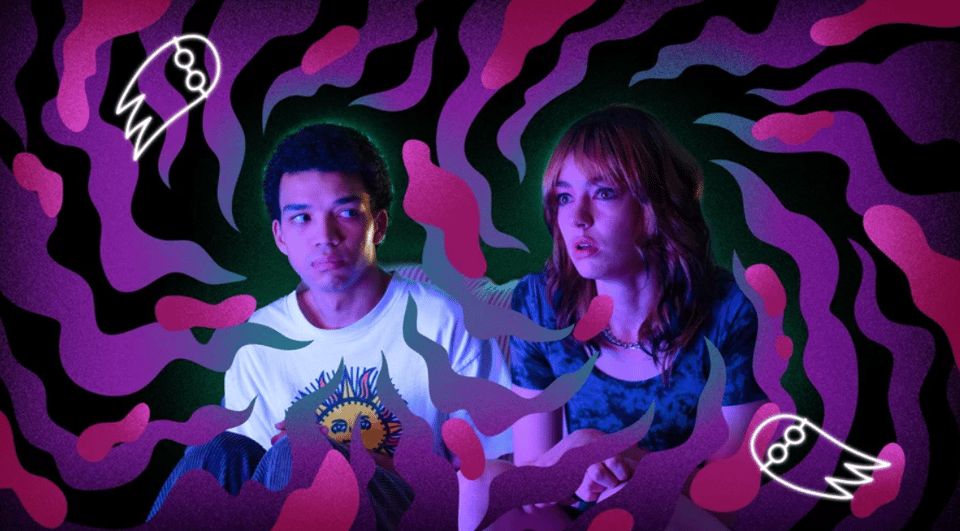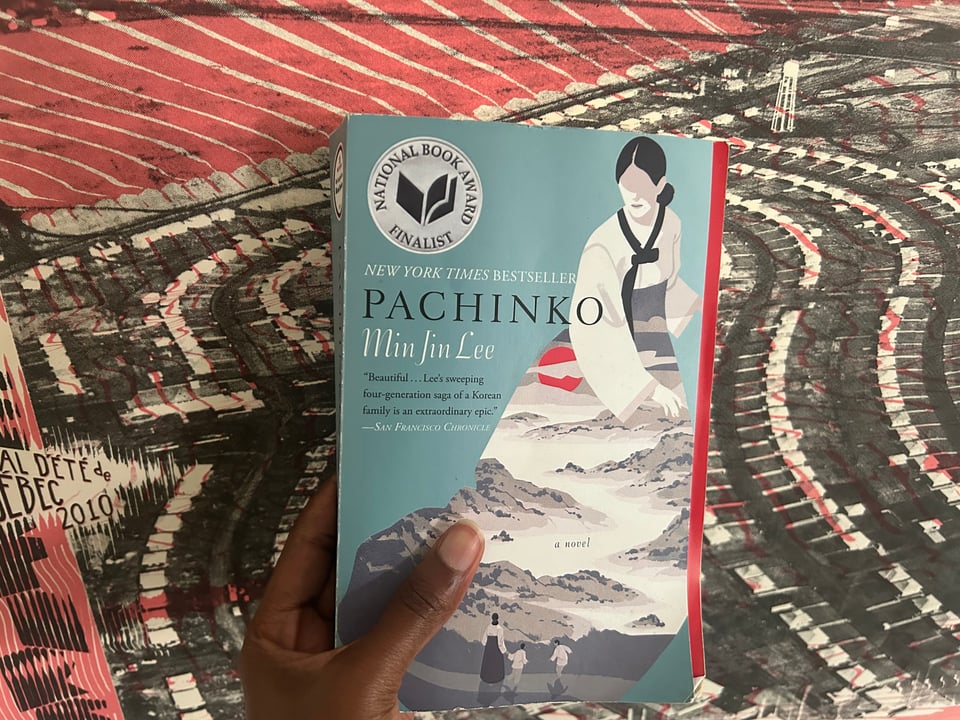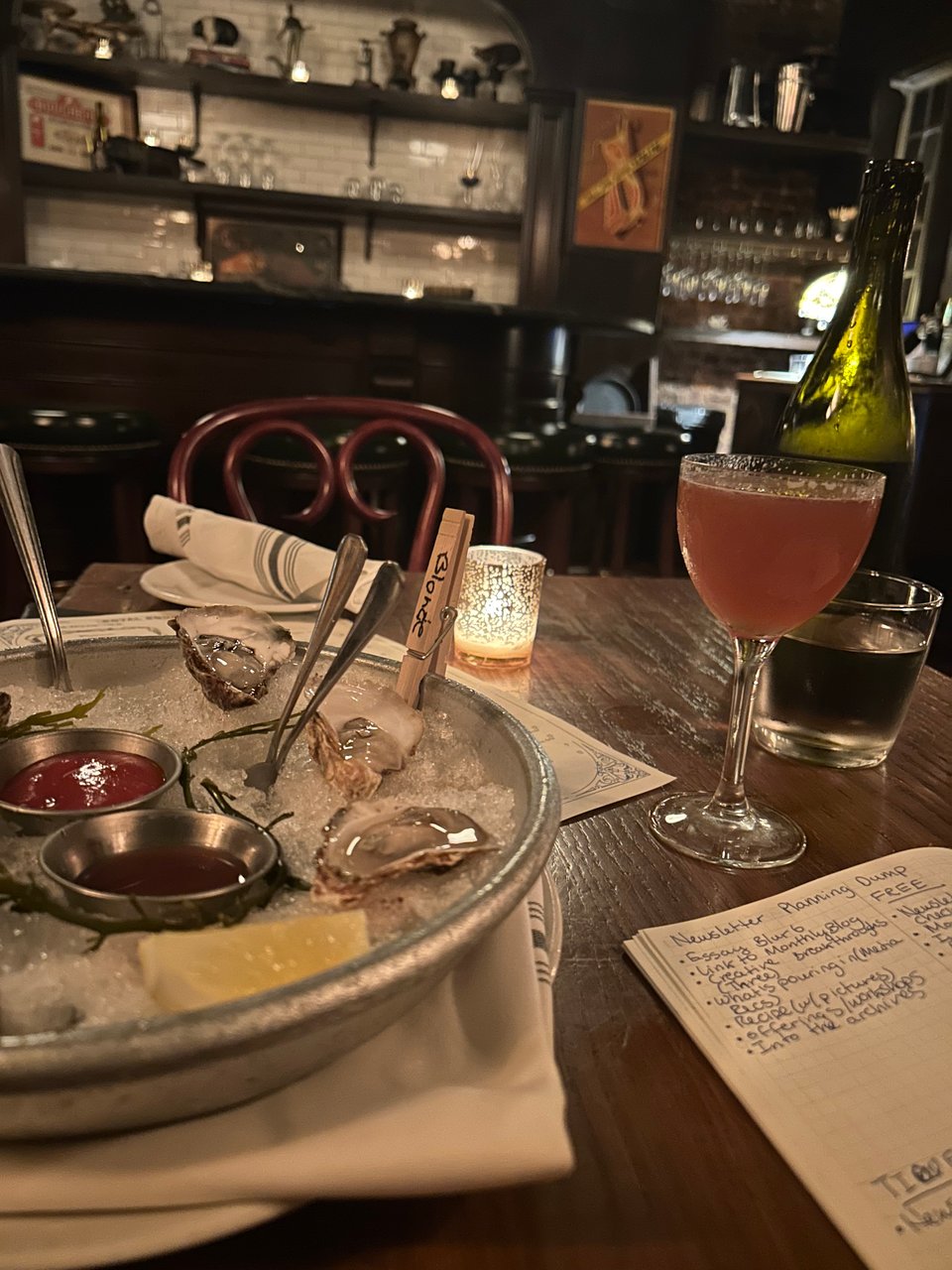🛝 play is a promise
some reflections on writing a novel and moving towards more play in my creative practice.
Hello dear friends,
Happy July! Hope your summer has been a sticky, glorious dream. I want to start off by saying thank you so much for visiting my world and being a subscriber, I am so grateful you’re here! Your support helps me keep showing up for the quiet, ongoing work of writing my novel. This month, I’ve opened up all my premium (paid) content to everyone on my list — a small gift of thanks and a taste of what’s unfolding behind the scenes. That also means that for August only, anyone on the list regardless of subscription tier can participate in the monthly Q&A: ask me anything about writing, freelancing, creative process, burnout, etc. I’ll respond with thoughtful reflections. All you need to do is reply to this email with your query.
This week, I wrote down some reflections on how I guide myself from the fragile stage of inspiration to sustainable, creative momentum. Read it here:

guidenotes on creative avoidance — SOJOURNER AHEBEE
some reflections on how I guide myself from the inspiration stage to sustainable, creative momentum and progress that isn’t rattled by doubt.
💡i just had an epiphany (creative breakthroughs)
playful possibility: For the past two weeks, I've been dropping into an Afro-Cuban dance class. The class draws from the history of enslaved people who were kidnapped from present-day Nigeria during the trans-Atlantic slave trade and brought to Cuba. Despite the horrific journey they endured, and the centuries of enslavement that followed, many were able to preserve the spiritual traditions of their ethnic group - the Yoruba peoples – and continue to water their belief system through layered stories that took the form of dances and songs, just to name a few. Each class is centered around a specific Yoruba divinity (referred to as Orishas) and each dance tells a kind of creation story about these divinities. The whole experience feels like dancing a story through your body. You have to surrender to the story and just play through the movements. As I’ve come to learn over the few short weeks, depending where enslaved Africans were brought (Cuba, Brazil, Trinidad, and so on) the movements for each of the dances shift and alter in their own way. In one place, there might be a sharpness in the movement, where in another place, the movement might be more fluid. I allowed myself to play through all these possibilities, these creative shifts Black people painstakingly reinvented and played with so as to survive. Playing is about possibility. And possibility is about life. I think one of the major reminders of this past month is that I need to set aside time and space for the safety of play, to do something I don’t need to be good at, just present for. Play teaches me that I am more than enough, and despite the circumstance or chapter of my life, I am always full of possibility. What have you been wanting to play at or play with in this chapter of your life?
mapping the week: There’s finally time to work on many of the projects I had to put aside for many years but how to show up for these projects and make use of that time is a whole ‘nother story. Something that’s been helpful this past month is compartmentalizing my week according to my projects. I have a few clients I’m doing some freelance work for right now, so I typically like to work on those projects for the first few days of the week. Thursday and Fridays are for non-writing creative projects like preparing for my podcast episodes or creating a workshop. And weekends are for writing and resetting. That’s the basic structure so far, but what I really like about it is that it gets rid of that voice in my head that is always telling me I’m a disappointment because I didn't write every day or insert whatever creative thing I am trying to prioritize. Something about setting the expectation for what the day is actually for takes the pressure off and makes it more likely that I’ll meet my goals. And I can play with this structure day to day, week to week, and month to month. As I change, the map of my week is free to change too. The other benefit is that it requires way less project jumping within a single day. I know that works for some, but it’s quite disorienting for me. Building a website for someone requires a very different part of my brain than writing a poem. I like to separate them if I can, so I can show up as present as possible for the task at hand. And finally, a question for you: What creative goals have been hard to meet this past month and what might be the cause? How could you shift the expectation around this goal?

🌧️ what’s pouring in (sojourner’s media inspo)
scared to look inside: I watched Jane Schoenbrun’s psychological horror drama film, I Saw The TV Glow (2024) one moody, rainy night in July. It’s about two struggling teenagers who build a strange friendship through their love of a television show they watch together in a basement over many years. They’re both neglected/unseen in many ways by their families and are navigating immense pain they don’t really know how to express. I was stunned by the really creative use of lighting in the film, the tense quiet that is constantly suspended over the characters and the viewers alike, and I loved the exploration of Trans identity, and keeping emotions/beliefs in for too long. I had a big cry after the film ended. It felt good. 10/10 would recommend. Don’t keep anything in for too long. Let it out.

Photo by A24/Illustration by Jackie Lay/NPR 4-generation Korean epic: I’m currently reading Pachinko by Min Jin Lee (Thank you dear G!!). WHERE TO BEGIN???? This is going to be the book of my year. The book to end all books. Min Jin Lee did it, we don’t need to toil any longer. OK OK, let me be so for real for a second: the story follows a Korean family from the outset of the Japanese occupation of Korea in the early 1900s through the next three generations of this family’s life in Japan and later the US. As I inch closer and closer to the end of this 400+ page novel, I'm still in awe of how precious each of the characters feel to me. The book pulls you back to its orbit again and again. And Lee has this masterful way of moving in and out of many character’s heads, sometimes within a single page or even a single sentence! And it feels seamless. You’re deeply embodied in the thoughts, yearnings, failures, and pleasures of these characters. They become a part of you. This book was literally years and years in the making, and began as a research inquiry into the lives of Japanese-born Koreans whose ancestors had lived through the occupation and made lives in Japan both during and decades after the occupation was over. Lee explores state-sanctioned violence and discrimination against Koreans in Japan, and creates a world that’s both historically rich and deeply lived in. There are stories of love, queerness, spirituality, sacrifice, and the list could go on. The novel is ambitious in its vision and it doesn’t miss.

la trompeta:I’ve been obsessed with Milena Casado’s Candid Records debut album, “Reflection of Another Self.” It’s bold yet also deeply soothing. I’ve enjoyed listening to it on bus commutes or when walking in the hustle and bustle of the city. It makes everything around you come ALIVE. And the compositions are interspersed with her own personal narratives, conversations, and experiences with race, beauty, insecurity, and self-love. It’s brave, tender, but sharp as a spell.

Milena Casado’s '“REFLECTION OF ANOTHER SELF” album cover.
I’m always looking for new media recs. If there’s something you think I would like, please share with me, I’d love to hear from you!
🌊 the bottom of the sea (novel writing updates)
Welcome to the first installment of “the bottom of the sea”, a premium section of the newsletter where I share updates on my novel writing progress over the past month.
As you already know, I’m writing a YA novel (woohoo!) But also, I have never written a novel before. In November of last year, I participated in National Novel Writing Month and wrote the first 25,000 words of my novel in 30 days lol. Then I didn’t look at the draft for months. Back in May of 2025, I finally returned to this story and did a full read-through of the beginning of my novel to see what could be salvaged. I did one round of just reading the draft, and then a second round where I took notes. I decided to focus on basic things like pacing, obvious plot holes, awkward dialogue, places where the world building could be developed more, questions that were coming up regarding my characters and their desires/behaviors, and the structure of the story. I expected this process to be a lot more painful but it was actually kind of fun and I was really surprised by how much of the draft I still loved.

Margin notes: Lots of questions came up for me in the cold read process, and I’d love to share them with you here. These are some of the literal notes I wrote to myself on the physical draft I printed during the cold read:
Has the protagonist, Ahou, always felt controlled or magnetized to the ocean?
Who is telling the story? The protagonist or someone else looking back on the events that have taken place? The ocean? Should the story take place in the present?
Can you find some new words or ways to describe the water?
Insert chapter break here.
World building: we need more visual descriptions of what the coastal, Ivoirien beach looks like. Weather, geography, colors in landscape, etc.
I reference a fictional, Ivoiren ethnic group and came up with a creation story for this group … If the story takes place in the Ivory Coast and not a fictional city, how should I resolve this?
Should the book open with the mermaid lore scene and flash forward to the current opening scene with Ahou and her father in the ocean?

breakthroughs: Many of the questions I left for myself in the margins lead to some important realizations about the story and the directions I want to pursue. Here they are distilled for you:
Setting - When I first began this process back in November, I knew I wanted to write a fantasy and I thought it made the most sense for my story to take place in a fictional country that is heavily inspired by the Ivory Coast. But, as I was doing the read through, it became clear that it would be really hard to write a story whose plot is interwoven with a historical event like the Trans-Atlantic slave trade while the story takes place in a country that doesn’t exist in our world. But the other question then became, if the story takes place in the Ivory Coast, what time period does it take place in and how does one get that period down accurately through the world building. As someone who was born in the Ivory Coast in the mid-90s but left when I was 8, I have some memories of my time there but a lot of my memories were filled in by my mother over the years. And I think I was feeling a little daunted by having to get the time and the details of the country right, so the fictional coastal city felt like an easy(ish) way out. But as I sit with the story, and potency of the setting that I’ve already built from my own memories and the memories I share with others of my birth country, I've come to realize that it’s up to me to do the research and make the Ivory Coast come alive on the page. I know it’s common for some writers to get grants and travel to the places they are writing about on an informal research trip or to interview people who have the knowledge and expertise to help them fill in those gaps. I’m excited by the possibility of returning to the Ivory Coast to do this work.
pov - the original draft of this novel was written in 3rd person. I think I was drawn to 3rd person because it feels like I’m telling this folklore and everyone is gathering around to hear it. But as I got to the end of the cold read, I realized that my protagonist, Ahou, is a young-ish teenager who has all these distorted beliefs about grief and loss and her own sense of identity. And I think I’m craving being completely inside her head. She is certainly the character who has the most growing to do in the story, and I want my readers to have complete, unfettered access to her growth and her change in beliefs. The shift from 3rd to first person also brought up another possibility: because so much of this story is going to be about uncovering Ahou’s familial relationship to the ocean and by extension the trans-Atlantic slave trade, this may become a multi-pOV novel where we get to experience the POV of Ahou’s ancestors, as well as Ahou’s mother, who’s had an outsized influence on Ahou’s emotional development and self-concept.

the repurposed recipe binder where my cold read draft lives. I loved printing out all the pages and getting to physically touch the pages as I read and took notes. a song in my head: Miles Davis’ Kind of Blue album was one of the welcome sounds I leaned on as I wrote and edited this draft.
a paragraph i feel proud of: and finally, here’s a short excerpt from the cold read:
The waves lapped up against the brown of her father’s back. The only sign of life around was in the water. And then, as if to end what felt like an agonizing rejection from her father, a hole in the ocean began to form – but only around him. Ahou, with salt in her mouth, hair all deranged, and a small cut above her upper lip, stopped fully in her wet tracks. She watched as the water around her father drained and all the sea’s creatures took one big breath for what once supported them and was now oddly and violently not there… And then a second hole opened up beneath her father, sucking him into the mud of things, deeper below the bottom where there was no bottom, where no human had ever thought to go, where Ahou had never given any thought to a bottom like that existing at all.
final thoughts: When I got to the end of the cold read, I was at a loss for what to do next. I’m a poet. I have no idea how to make characters walk across rooms and say things to each other. Soooo, before I returned to writing, I decided to read two craft books on fiction writing, one of which was told in a personal memoir style and the other was a traditional “this is how to outline your novel” vibe. Both books changed EVERYTHING for me, and I’ll share more next month about what I’m taking away. August is going to be all about outlining my novel from beginning to end (eeekkkk I’m scared!). Can’t wait to share more soon! And let me know what you’d like to see more of here, I want to share what feels most interesting or valuable to you.
🫴🏿 from me to you ( offerings, workshops, & more)
If you made it to the end of the newsletter, thank you so much — it truly means the world. And if you enjoyed the creative breakthroughs, the novel updates, and the media recs, I’d love to invite you to consider upgrading to a Tier 1 or Tier 2 subscription below. Tier 1 subscribers enjoy access to the creative breakthroughs/ monthly prompts, while Tier 2 subscribers get access to everything from Tier 1 as well as deeper offerings — including novel excerpts and mood boards, character development notes, as well as multi-medium media recs and reviews of what I’m reading, listening to, and watching on any given month. Every subscription helps sustain my creative practice and brings this novel-in-progress one step closer to the world. No pressure, as always. The monthly blog I include at the top of the email will always be free. Many thanks for reading, and for being part of this little corner of the internet with me!
🗂️ into the archives
Chasing beauty in Durham, N.C.

Chasing Beauty in Durham — SOJOURNER AHEBEE
a travel diary on beauty, home, and survival in Durham, North Carolina.
The source of creative confidence and the magic of beginning

The Source of Creative Self-Confidence — SOJOURNER AHEBEE
a guide for nurturing the confidence within you to get started on any creative project or dream.
tarot creative diary no. 0 - what is ancestral tarot?
I’ve been talking to my ancestors for years, and more recently I’ve been experimenting with a self-guided tarot practice to communicate with these loved ones. I’ve been writing about what that practice feels and looks like on my “ancestral tarot” blog series. Here’s an older post that’s sort of an introduction to what I’m calling “ancestral tarot” and a bit about who my ancestors are. Do you talk to your ancestors? And if you don’t already, what kind of relationship do you want to have with them? Would love to hear your thoughts in an email, drop me a message!

How To Use Tarot To Talk To Your Ancestors — SOJOURNER AHEBEE
Our ancestors have messages for us. I harness these messages through the power of tarot and you can too. Read my weekly ancestral tarot diaries about the big life themes pushing us towards our wildest desires.
❤️🔥 Until soon, dear friends!
from the footsteps of my desires to yours,
🦉sojourner